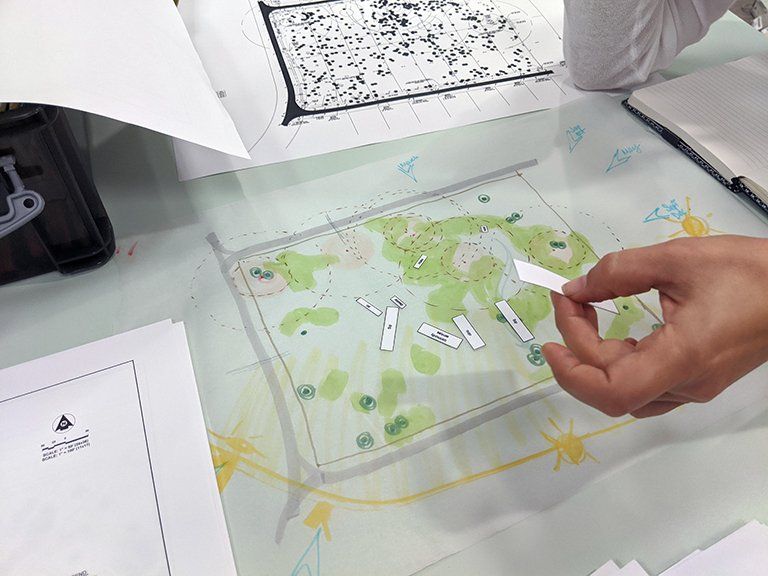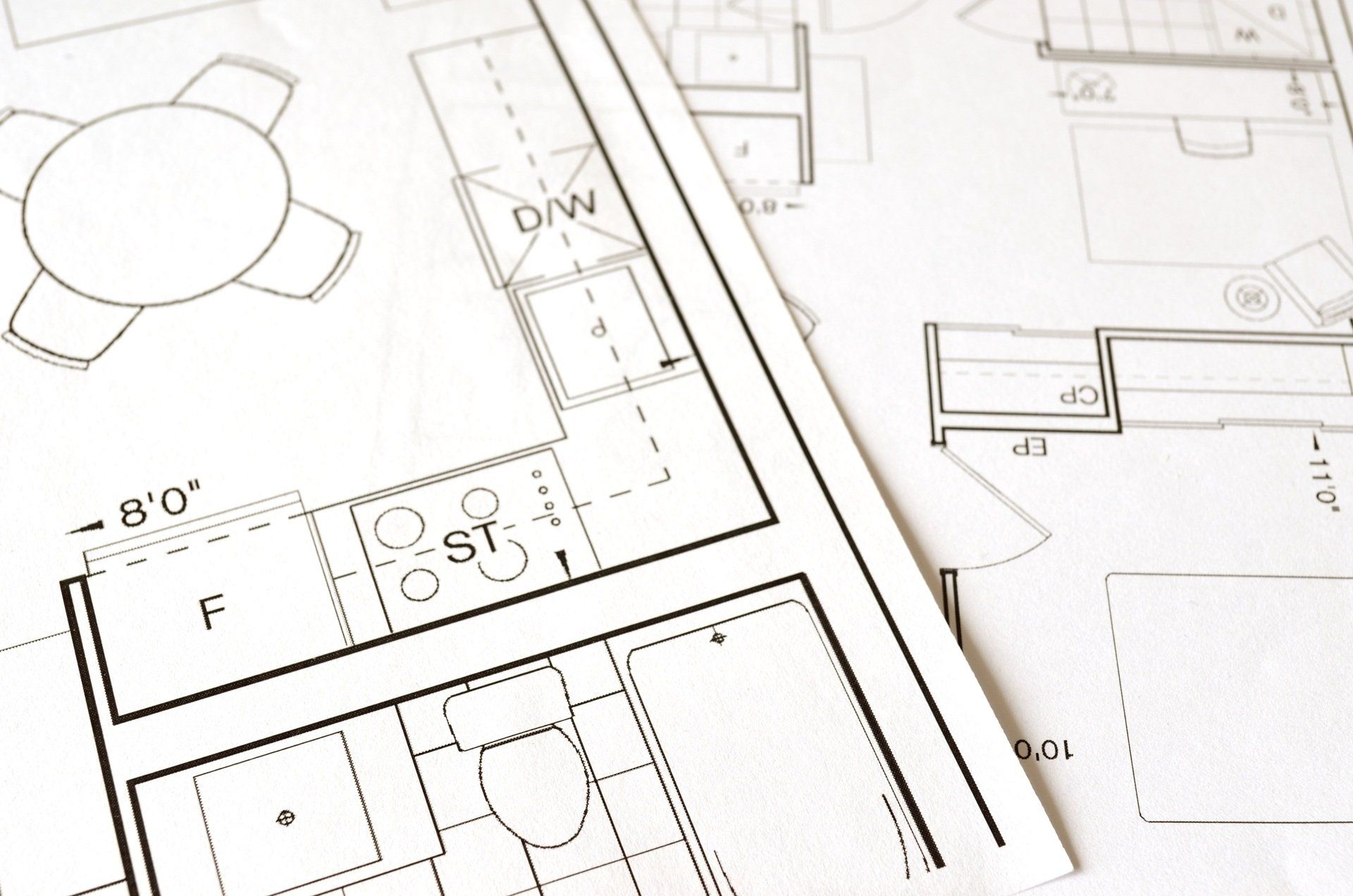Architects Vs. Engineers: Differences Between Them
Similar goals, different methods: Architects, engineers and the differences between them.
Have you noticed that, in many relationships, there is often the big idea person and then alongside them is the more practical, detailed partner? The relationship between architect and engineer is similar.
On a micro level, this could be as simple as building a treehouse. While your partner is thinking about how it will look aesthetically, you're doing all the groundwork and calculations to make sure it's safe for the kids.
On a macro level, an architect is responsible for planning, designing, and overseeing the construction of a building. At the same time, engineers use a combination of physics and mathematics to ensure the building's safety and functionality. This is, of course, a simple way to explain two different roles with many complexities and differences between them.
If you'd like to learn more about what an architect does vs. an engineer, the key differences between them, and whether you'll need both for your commercial construction project, you've come to the right place.
To understand the differences between the roles of an architect and an engineer in constructing a building, let's begin by describing an architect’s and engineer's responsibilities in more detail.
What is the role of an architect?
In Latin, the word "architectus" directly translates to "master builder" and, though architects these days don't actually construct buildings with their bare hands, I like to consider us as the "quarterback" of the project. Architects are responsible for designing a building, often using design and modeling software, such as REVIT, to meet the needs of those who'll eventually occupy the building.
Architects are more focused on creative design and problem-solving; they have the ability to think outside the box, visualize your design, and translate your needs, wants, and tastes into a finished product. They also think about how you will ultimately use and experience your space, and take into consideration how the space and different elements need to be arranged, how your business will fit in with its surroundings, and so much more.
What is the role of an engineer?
An engineer uses a blend of physics and mathematics to ensure the architect's designs are structurally sound and technically functional. They're primarily involved in answering the question, "How will the design work?"
Engineers tend to be more focused on more practical elements of the project; they're not responsible for coming up with the big, creative ideas for your building; instead, they're more concerned with whether the support beams will prevent your roof from collapsing or whether the temperature in your office is comfortable.
The differences between architects engineers
Training
Architects act almost like an orchestra conductor, making sure all the moving parts are running smoothly between the client, interior designer, engineers and contractor. They're the visionary behind the design and the project manager who brings it successfully to life.
Architects are trained to:
● Analyze the feasibility of a site
● Ensure a building's layout is functional
● Design the aesthetics of a building’s interior and exterior
● Oversee the construction process
● Manage the project and client relationship
● Adhere to the client’s budgets
● Ensure the building meets building codes
● Help to keep construction projects on schedule
● Measure a building's environmental impact
● Adapt designs if construction issues arise
Engineers undergo rigorous training to foresee any problems that could occur before construction begins and find technical solutions to those problems. They help select suitable materials, structural processes, and internal systems needed for a solid, safe, well-functioning building that is site appropriate, won't collapse, and meets the needs of the occupants from a system standpoint.
Engineers are trained to:
● Ensure a building will operate efficiently
● Identify and solve technical problems
● Test and assess building systems and structure
● Use design software to draw technical plans
● Design based on practicality, safety, and cost
● Assist the architect in making the design safe
● Evaluate environmental conditions
Licensing
A key difference between architects and engineers is in their areas of specialization and licensing. While architects only need one license to work on a variety of project types, there are different licenses for different types of engineers, including:
● Civil engineering focuses on the needs of the site, and the routing of utilities, such as water and sanitation piping.
● Structural engineering is all about the stability of a building including beams, columns, footings and trusses needed to create a sound structure.
● Mechanical engineering refers to a building’s HVAC (Heating, Ventilation, and Air Conditioning) systems and plumbing systems, and can have a huge impact on energy consumption.
● Electrical engineering refers to how power is distributed throughout a building, including lighting and outlets, but also environmentally friendly systems like solar and daylight harvesting.
Though architects and engineers often work closely together and share similar goals, their training is very different.
Do you need an architect, an engineer, or both?
The answer really depends on the complexity and size of your construction project.
For most commercial projects, you'll likely need both an architect and engineer working together on your design for the best possible result. For residential projects, an architect may suffice from a design standpoint and a structural engineer may suffice for permitting.
(Did you know that in the United States, residential construction permitting can be handled by the owner and the only signed and sealed documents required are by a structural engineer?)
Our advice? Always start your project by talking with a registered architect first. Learn more about why this is essential in our blog post "Use a registered architect."
Why is collaboration between architects and engineers important?
At Schimberg Group, we firmly believe that it is important to assemble a team early in the building design process, and this includes involving skilled engineers as soon as possible.
As designers, architects may have great ideas, but those ideas can only be realized if they can be safely and functionally constructed. This is where the engineer’s input can help architects stay grounded and avoid wasted time and effort pursuing ideas that won’t work.
Also, early and close collaboration can lead to a better design and more efficient result for the client.
For example, as part of our design for the new Suncoast Humane Society animal rescue and adoption campus, the design of the shelter included exposed structural components. Knowing this early on and working with the engineers closely allowed us, as the architects, to effectively integrate those components into our final design solution.
Another example can be found in restaurants. Often, ceiling heights and building forms dictate where AC ducts are run or ventilation hoods are located. For all three of The Chiles Group restaurants, we needed to condition the spaces from side wall grills to cool the dining areas. Gathering that information early in the design process allowed us to incorporate that aspect of the design into the interiors and work with the mechanical engineer to specify the appropriate grill design.
Sustainability for profit
Collaborations between architects and engineers can also contribute to better solutions for the environment.
We worked with LTA civil engineers to design a restaurant parking lot for The Chiles Group that used layers of rock instead of pipes and asphalt to handle stormwater run-off. This design provided a more sustainable approach, allowing water to percolate into the ground on-site rather than impact the local aquifers. In addition, the final cost of this system resulted in a savings to the owner.
Another project of ours required large openings to be placed in an existing masonry wall. Our first inclination was to remove the wall and rebuild it, but after visiting the site with the structural engineer, we determined that the masonry wall could remain and the openings could be created using concrete portals. These portals then became part of the design and a unique element reflective of the client’s and our aesthetic. It also turned out to be a more cost-effective approach, which made the client even happier. It was truly a win-win for everyone involved.
At Schimberg Group, we work closely with engineers
We hope this blog has provided you with a better understanding of the differences between engineers and architects and how we work with our engineering partners to find better, more cost-effective and sustainable solutions.
When thinking about your next project, be sure to hire an architect who has a similar appreciation for constructive relationships, and if you're ready to get started, why not benefit from our close collaboration with trusted engineers to ensure your building is safe, efficient, and long-lasting.
If you're interested in our architectural services for your commercial or non-profit project and would like to see how we can help you, please get in touch or to share your thoughts, email barron@theschim.com.
Photo by Daniel McCullough on Unsplash





